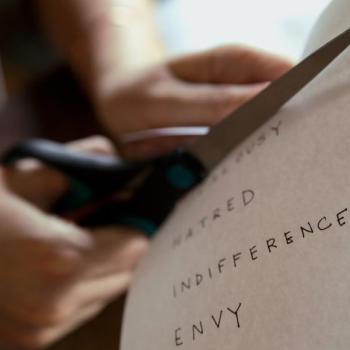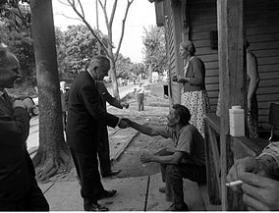
Back in the day, choosing not to identify oneself by race in applying to colleges and universities, and even for employment, was much easier: Photo identification wasn’t required for applications. In theory (but only in theory – for certainly surnames, schools attended, and even interests can be racial/ethnic identifiers), one could apply “race blind” and be judged objectively on such things as grade point averages (GPAs), test scores (SAT, ACT, GRE, GMAT, MCAT, LSAT, etc.), interests and extracurricular activities.
I know this for a fact. I’m one of those individuals who chose not to identify myself by race in applications.
My choice had nothing to do with not being proud of being a black person; on the contrary, my pride in my family and our story of overcoming adversity is real.
What prompted me to never “check the box” was an essay by a young black woman – a freshman at an Ivy-League college – who wrote about her experience in having been a top performer on the Scholastic Aptitude Test (SAT). She had outscored (with a nearly perfect SAT score) a white classmate who had gone on to become a National Merit Scholar – prestigious recognition given to the top achievers on the SAT. But because this young woman had checked the box on the test and identified herself as black, she had been pulled out of the National Merit competition and entered solely in the National Achievement competition – the separate SAT awards program for students of color.
The affirmative action door swings both ways.
After reading that young woman’s essay at the oh-so-mature age of 14 – and sharing her palpable disappointment – I vowed never to “check the box.” Her experience didn’t sound at all affirmative to me. I preferred to take my chances swimming in the proverbial open sea.
I am keenly aware that my story is not the norm; I am an exception in nearly every way. I was privileged to have been accepted to the highly-competitive Advanced Placement track of an exceptional public high school. That privilege was not then, nor is it now, available to most students of color in public schools around our country. It is not a privilege that I have ever taken for granted. And, that privilege led to my being accepted to every college to which I applied, with generous scholarship offers making it possible for even this kid from a not-well-to-do household in Alabama to attend and thrive at a competitive private college.
Fast forward a few years. I applied to law school, and, as was my habit, I didn’t “check the box.” The law school chose to admit me solely on the objective basis of undergraduate GPA, Law School Admission Test (LSAT) score, and prior employment.
The law school (part of a public university) was operating under a desegregation mandate that required 10% of each year’s entering class to be black, in order to ensure diversity. And, in an effort to increase retention among entering black students, the law school had taken the further step of requiring black students to attend additional Saturday study sessions in research and writing. Since I hadn’t checked the box, I messed up all of the numbers: All of the black students in that first year class had been accounted for, except me. I wasn’t on the list of students required to attend the additional study sessions. But once the heads were re-counted in our classes, the folks in the law school administration who cared about numbers realized that the numbers were off by one.
By the end of the first week of classes, the professor who was responsible for the study program hunted me down to inform me that my attendance was required at the next day’s mandatory session.
My nose was sufficiently shoved out-of-joint by the administration’s assumption that all black students (Really? No one else?) were somehow in need of additional “help” in order to succeed. Clearly, the law school did not assume when I was admitted, race unknown, that I needed additional study sessions to ensure my success.
The affirmative action door swings both ways.
I not-so-politely informed the professor, and later, more politely informed the Dean (after I was summoned to his office…), that I did not plan to attend the study sessions since I didn’t believe that the law school could legally require me, after having been duly admitted in accordance with the law school’s admissions policies, to complete coursework that was not being required of non-black students in order to complete my degree. Invite me? Sure. Mandate me? No.
The affirmative action door swings both ways.
Now, in 2023, a majority of the Supreme Court has ruled in two cases – Students for Fair Admissions v. President and Fellows of Harvard, and Students for Fair Admissions v. University of North Carolina – that race may not be taken into consideration in college admissions. Harvard and UNC claim their admissions policies had been tailored to create permissible and desirable racial and ethnic diversity in their learning environments. In striking down those policies, the Court concluded that the use of affirmative action by colleges and universities to create diverse student populations violates the 14th Amendment’s guarantee of equal protection under the laws and the prohibition on race-based discrimination. Creating a diverse student body (reflective of our population) was determined not to be a sufficiently compelling interest to allow racial preferences.
We are 45 years past the Supreme Court’s 1978 decision in Regents of the University of California v. Bakke, in which the Court held that even though the 14th Amendment’s Equal Protection Clause prohibited the university from setting aside seats (quotas) and admitting students of color under lower admissions criteria, it did not prohibit the university from taking race into account in order to ensure a diverse student population. The Bakke decision was reaffirmed in Grutter v. Bollinger in 2003.
Seemingly, the current Court’s majority determined that over these 45 years, our nation has made sufficient progress such that higher education learning environments will necessarily be diverse and reflective of our communities even if race is not taken into consideration; diversity in admissions, the Court finds, can be drawn from the lived experiences of the applicants. Chief Justice John Roberts noted, in writing for the majority, “Nothing in this opinion should be construed as prohibiting universities from considering an applicant’s discussion of how race affected his or her life, be it through discrimination, inspiration, or otherwise.”
So, how will diversity be achieved in our institutions of higher learning if race can no longer be considered in admissions?
And, there’s that nagging question: Since virtually every institution of higher learning requires photo identification with applications to ensure that we are not imposters, when or how will an institution’s use of that required information be impermissible?
If colleges and universities want diverse campuses that reflect our communities, they’ll need to be intentional about creating true diversity – socioeconomic diversity, diversity in interests, diversity in ableism, diversity in gender and sexual orientation, diversity in challenges overcome. At the heart of the matter should be a desire to create a just society in which all persons – regardless of race, gender/orientation, ethnicity or physical ability – may be considered equitably for and receive opportunities. We are all better when we grow and learn to work in community together. Colleges can waive application fees for economically-disadvantaged students. Colleges can intentionally work with counselors at less-than-top-tier public high schools to identify stellar students who might otherwise not consider competitive colleges (Nothing is preventing any college from intentionally reaching out to public schools in economically disadvantaged neighborhoods, right? And if the students happen to be persons of color…?).
And, just as that affirmative action door swings both ways, so the race-neutral admissions posture swings both ways: “Set-asides” for legacies solely because family members previously attended a college, and perhaps even guaranteed spaces for some athletes, should also necessarily be reconsidered in the push for true diversity.
But creating a just society starts long before college admissions: How we choose to address poverty, and inequities in health, housing and education in our most underserved communities affects long-term outcomes in every facet of our society. We can’t get it right at college admission if we’re not working hard to get it right from birth. Indeed, college, vocational school and graduate school may be some of the last points at which we can try to “right” other shortcomings.
All of us are made in the image and likeness of God, and all of us are greater than the sum of labels that are attached to us. Somewhere between set-asides and negative assumptions must be better ways to ensure diversity. We can pray that we all will be committed to finding them.

















